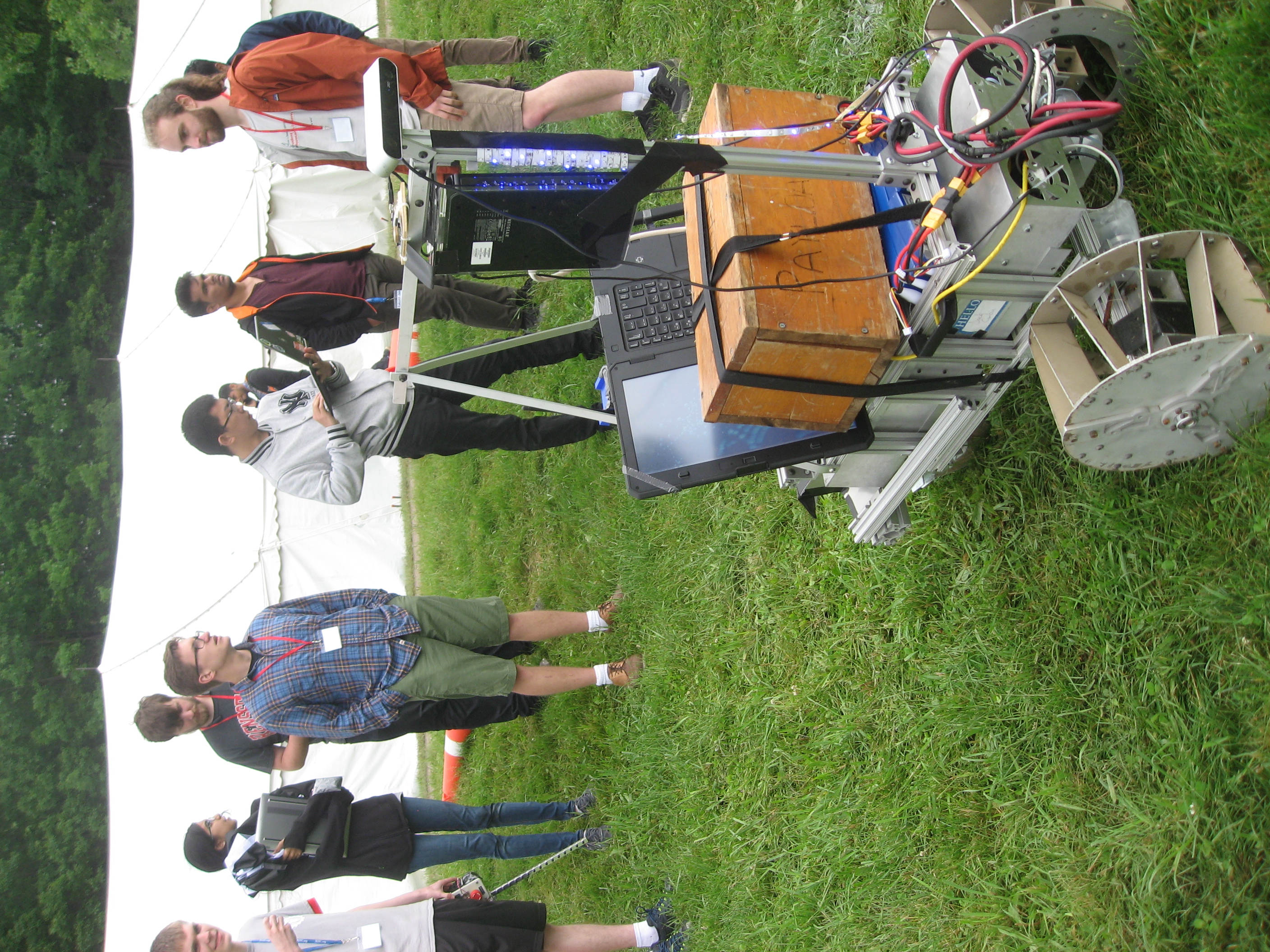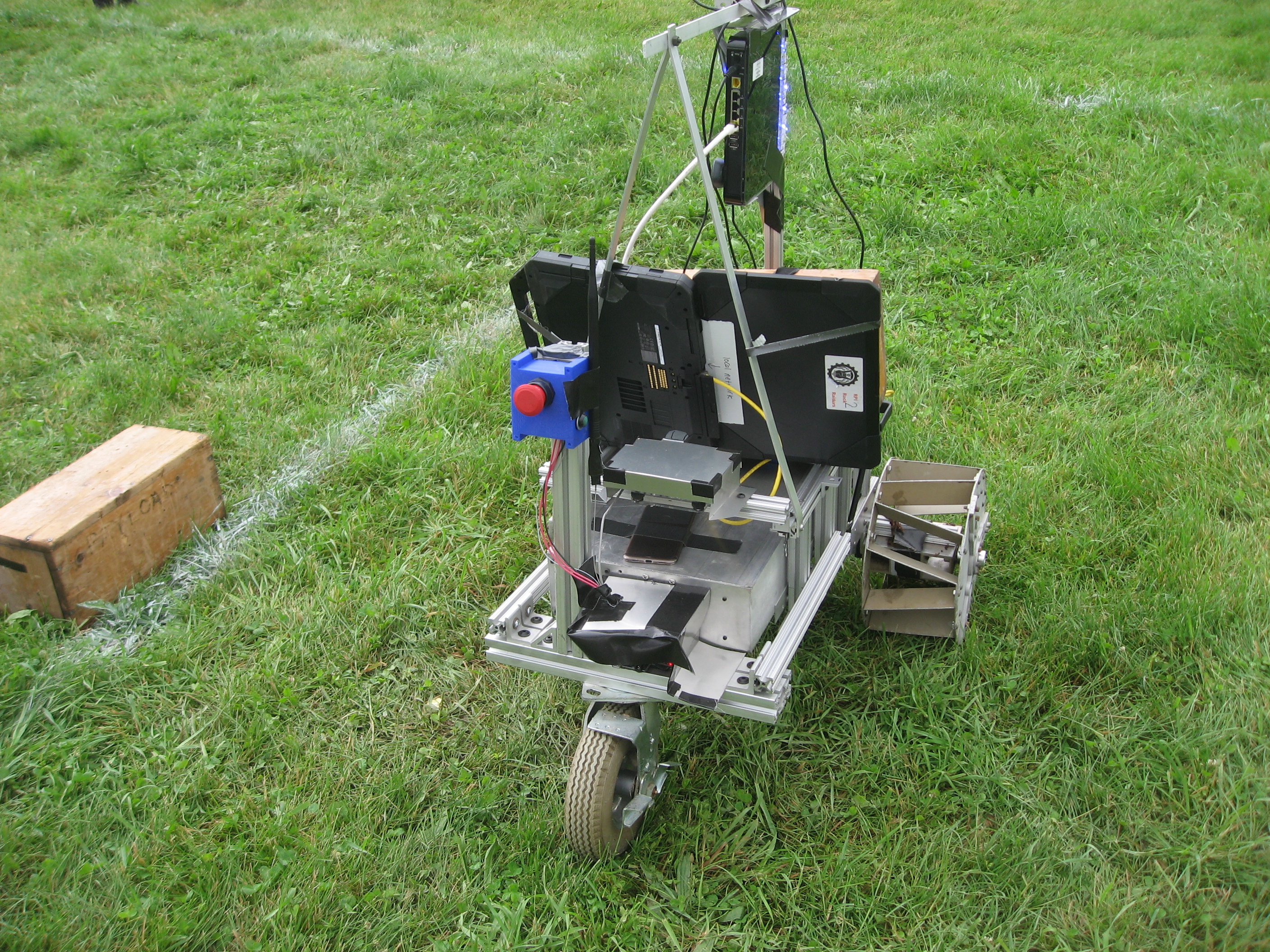Autonomous Robot
I was heavily involved with RPI's premier robotics team, the Rock Raiders. I primairly worked on the robot software, which included:
- A companion simulator. I wrote it to present the same APIs as our ROS device drivers, so it was a drop-in replacement for the robot hardware. It was incredibly usefulf when debugging our localization and navigation stack
- Localization. I worked on our sensor fusion strategy, so deciding which sensors are fused into which coordinate frames, and how they were fed into our path planner and obstacle map. GPS was a lot less useful than I thought it would be
- Vision. IGVC required driving within painted white lanes on a grassy field. I worked extensively on our lane detector
- Hardware integration. This was mostly writing ROS nodes to communicate with sensors and motor drivers
- Fixing random problems. For example, I found a bug in the firmware of our motor drivers where they would only output half power (it was very weird)

Waiting for our turn to compete. The wood box is a 30lb weight robots are required to carry around while competing.

The rear of the robot. Not too much going on.
It started raining, so we did a speedy waterproofing. Rockie was driving autonomously in this video.

A competition run. A judge is holding the wireless emergency stop in the brackground.
An early test of autonomously driving to a GPS coordinate. It looks like the local planner needed tuning.
An earlier incarnation of Rockie, before we switched from URC to IGVC. Note the arm and rocker suspension, both of which were not needed for IGVC. This driving was under remote control, autonomoy wasn't functional on hardware yet.